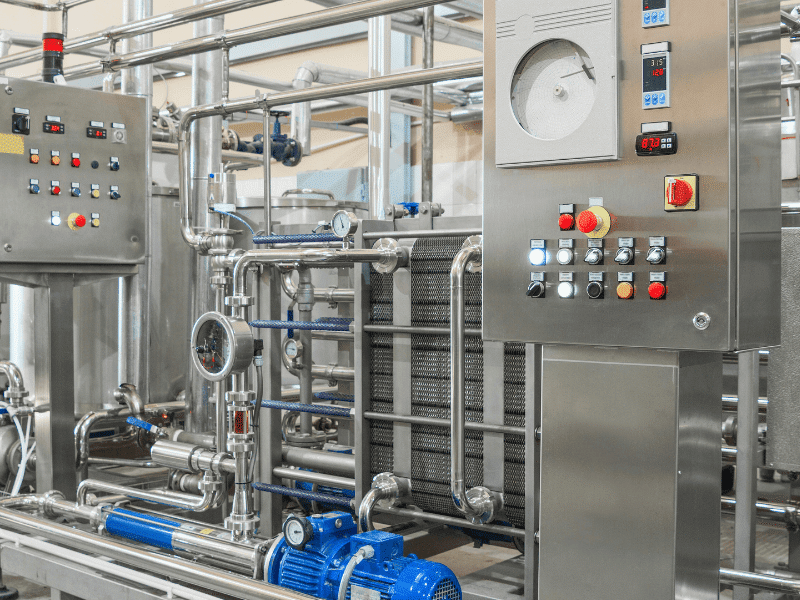Heat pipes are used to transport large amounts of heat quickly and efficiently. Heat pipes are a medium that transports heat from one location to another. This is done with a low-temperature resistance. They are commonly used in various industries, including aerospace, electronics, and HVAC systems.

In this guide, we will break down the science of heat pipes. We will explore the applications and guide you on how to select the best heat pipes for your business. Let’s dive in
Understanding Heat Pipes
Heat pipes are tubes that transfer heat from one point to another. Heat pipes move heat from the hot source to a cooler section where it can be dissipated.
The hot source is the evaporator section while the cooler section is the condenser section. Heat pipes are two-phase flow heat transfer devices. They adopt liquid to vapor process and vice versa.
Generally, they adopt the principle that heat absorbed by a liquid changes into a gas and is released when the gas changes into a liquid.
Heat pipes are tubes made of a wick structure that is perfectly sealed on both ends. This structure helps the working fluid flow freely in the pipe. Water is the most common working fluid.
The heat pipes are typically made of various materials. These materials include copper, aluminum, and some other metals. Copper is a commonly used material in the construction of heat pipes.
NASA on heat pipes
According to NASA heat pipes can be used for more than one purpose. These applications include the transportation of heat and heat spreading.
They also involve the creation of isothermal conditions. Furthermore, according to NASA, heat pipes are frequently used in spacecraft radiators.
How Do Heat Pipes Work?
Heat pipes are sealed, vacuum-insulated tubes. They are designed to transfer heat quickly and efficiently. Here’s how they work:
Key Components of a Heat Pipe
A heat pipe is made of three different parts that allow it to work efficiently. These three parts include:
- Vacuum-sealed compartment: This compartment is a sealed metallic casing or tube. It houses the wick structure and the working fluid. It also helps to create a vacuum environment which ensures efficient heat transfer.
- Capillary or Wick structure: The capillary or wick structure is found inside the body of a heat pipe. It allows the liquid phase of the working fluid to wick against the vapor phase. The wick structure adopts capillary action.
- Working fluid: The working fluid of a heat pipe is a gas or liquid that transfers heat. The selection of working fluid depends on the operating temperature. Various working fluids can be used such as water, ammonia, and methanol.
The Basic Operation of a Heat Pipe
The design of a heat pipe allows it to utilize the heat vaporization properties of the fluid. This provides high efficiency in the heat transfer process.
The fluid flows in the heat pipe through the pipe’s wick. The low-temperature end is the condenser, and the high-temperature end is the evaporator.
The movement of the fluid is from the low-temperature end to the high-temperature end. In addition, heat enters the system at the high-temperature end. Meanwhile, it leaves the system at the low-temperature end.
The operation of a heat pipe is a continuous cycle. It is divided into four steps:
- Vaporization: At the high-temperature end, heat enters the system. This causes the fluid to vaporize into gaseous form.
- Vapor flow: The vapor flows into the center tube through the vapor cavity.
- Condensation: Once the vapor gets to the low-temperature end, it condenses. Latent heat is released in the gas and it converts back to a fluid.
- Liquid return: Through capillary action, the fluid moves back to the hot temperature end of the heat pipe. This allows the process to continue repeatedly.
Applications of Heat Pipes
Heat pipes can be applied both domestically and industrially. They are highly versatile and can be designed to suit various requirements. Here are some of the applications of heat pipes:
- Motor and generator: Heat pipes can be used in generators and cooling motors. It serves as a high-performing heat exchanger. Heat pipes can also be utilized to preheat air. They can be used in thermal power industries to warm air. This heated air can then be used for the combustion of fuel.
- The central processing unit (CPU): The CPU of a computer produces excess heat that is not needed. This is due to the high-performance demand of the computer. Heat pipes can be adapted to provide efficient cooling solutions. This prevents overheating of the computer.
- HVAC systems: Heat pipes can be used to control humidity and moisture in HVAC systems. This is done through its integration with a heat exchanger.
- LED lighting: Heat pipe technology can be utilized to dissipate heat produced by LED bulbs. This helps to keep the operating temperature at its optimal levels.
- Consumer electronics: Devices such as smartphones, WI-FI routers, and game consoles make use of heat pipes to control heat.
- Aerospace: Satellites and spacecraft use heat pipes in their heat control systems.
Advantages of Heat Pipes
Heat pipes provide several benefits over other heat dissipation methods. Here are some of the main benefits:
- Enhanced thermal conductivity: Heat pipes are designed with highly conductive materials. These materials can include aluminum or copper. This enhances the heat transportation from the heat pipe to the heat sink.
- Heat transfer efficiency: Heat pipes are exceptionally efficient. This is due to their ability to transfer heat through the working fluid. They are the ideal option for heat transfer due to their high efficiency. This is especially true over long distances and between uneven surfaces.
- Lightweight and compact design: Heat pipes are light and thin. This gives heat pipes an edge over other dissipation methods. This makes them suitable for applications with limited weight and space. They are commonly used in devices such as laptops and mobile devices.
- Uniform heat distribution: Heat pipes can evenly distribute heat throughout their entire length. This helps to improve the overall cooling efficiency.
Choosing the Right Heat Pipes
The right heat pipes can efficiently transfer a high amount of heat to another point. Here are a few things to consider when choosing a heat pipe:
- The diameter of the heat pipe
- The length of the heat pipe
- The heat pipe material is compatible with the working fluid.
- Orientation of the heat pipe relative to gravity
- The protective heat pipe coating
A smaller diameter transfers less vapor. This translates into a smaller heat-carrying capacity. A larger diameter transfers more vapor. In addition, the thermal capacity of the heat pipe is impacted by the orientation of the pipe to gravity.
The length of a heat pipe affects its thermal performance. A shorter heat pipe has higher effective thermal conductivity. It also has increased heat transfer capability compared to longer ones.
Best thermal solution supplier
Heat pipes are one of the most efficient solutions for heat transfer. They offer numerous advantages such as high thermal conductivity, efficiency, and compact design.
Whether for electronics, aerospace, or HVAC systems, heat pipes provide a cost-effective and reliable method for heat dissipation.
If you are ready to integrate heat pipes into your next project, you need to partner with the right experts. Jiuju offers custom solutions tailored to your specific needs. Jiuju Tech is a leader in thermal management with 15+ years of experience.
Jiuju Tech offers cutting-edge heat pipe solutions for industries worldwide. Ready to see how our solutions can work for your business? Contact us today for a consultation.





